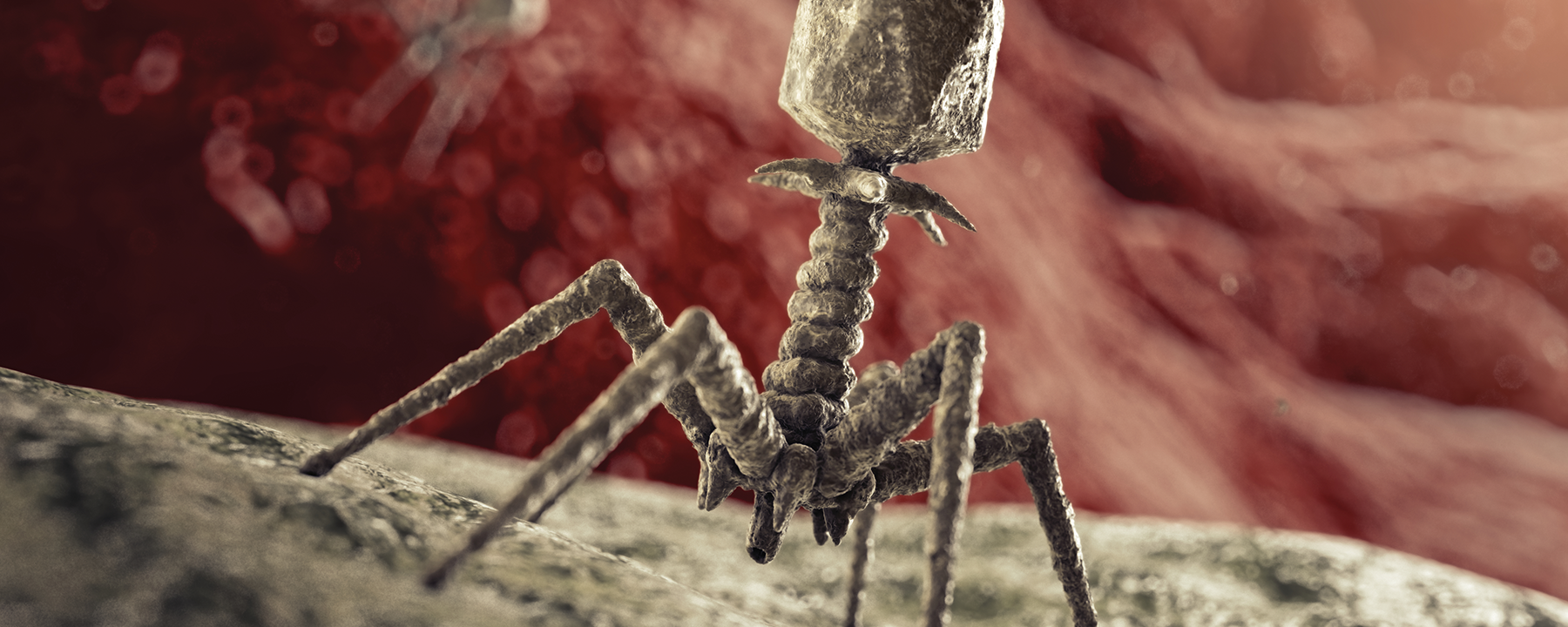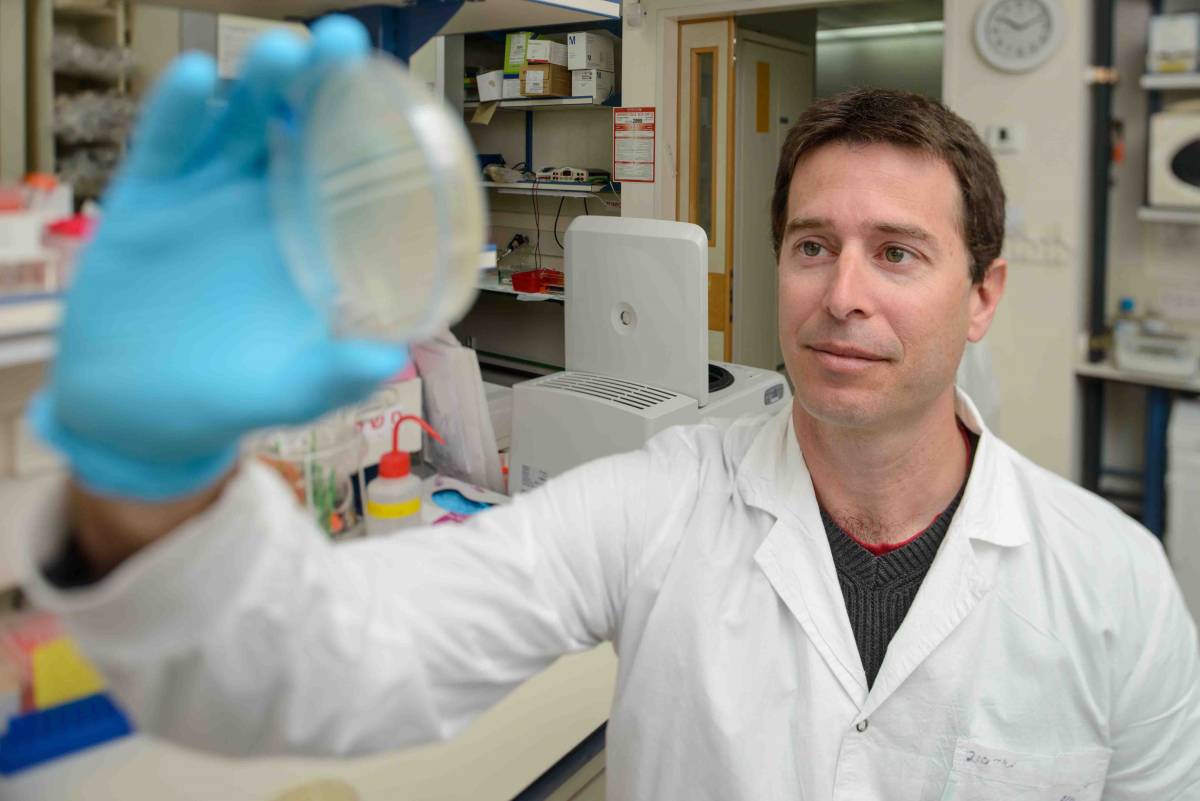
Many bacteria contain retrons, DNA sequences which code for enzymes that transcribe RNA into DNA and an unusual molecule made of both DNA and RNA. But microbiologists have puzzled over retrons’ function. “People suggested . . . this may be a selfish genetic element, [or] it may be involved in virulence,” says the Weizmann Institute of Science’s Rotem Sorek. “But nobody actually knew.”
See “Rotem Sorek Searches for Bacteria’s Defenses Against Viruses”
Sorek and colleagues recently noticed that retrons often appear in the bacterial genome alongside genes involved in defense against bacteriophages. When the team cloned retrons into E. coli strains that normally lack these elements, those populations better resisted viral infection. The effect was due to the retron-equipped cells’ tendency to self-destruct if they became infected. “It sounds counterintuitive,” Sorek says—but it’s better for the colony to have a few cells die to stop the virus replicating.

The researchers used mutant phages, genome sequencing, and in vitro experiments to show how one retron, Ec48, promotes this self-sacrifice. They found that Ec48 is activated by inhibition of a protein complex called RecBCD, an early responder in a bacterium’s anti-phage defenses—and a common target for invading phages. When RecBCD complexes in Ec48-containing bacteria were inhibited, either by a virus or by molecules the researchers added, the bacteria self-destructed within minutes, helping to protect neighboring cells.
See “Researchers Discover 10 New Immune Systems in Bacteria”
“This is another fantastic [study] from Rotem’s group,” says the University of Exeter’s Edze Westra, noting that while other researchers have converged on similar hypotheses, the Weizmann team’s study provides mechanistic insight into retrons’ role. The study also indicates that not all retrons defend the same cell systems against the same phages. “There’s a lot of diversity there, suggesting different retrons are likely to monitor different targets in the cell,” Westra says. “Now people can jump on this and try to figure out what all these targets are.”
The paper
A. Millman et al., “Bacterial retrons function in anti-phage defense,” Cell, 183:1551–61.e12, 2020.
